#koma shrine
Explore tagged Tumblr posts
Text

Nogomi clay doll, Yutoku Inari Shrine INARI-KOMA
I've had this in my collection for some time. (It didn't start out as a collection...) For years I just assumed that it was a zodiac figurine. It is a Celestial horse that flies through the Heavens with Wish fulfilling jewel on its back and it is associated with/named after Yutoku Inari Shrine in Kashima City, Saga Prefecture.
I'd gotten all excited when I spotted it on ebay. I had an Inari horse and didn't even know it. The monetary value of this little one is about twenty dollars US, but often goes for a lot more on various web sites.
4 notes
·
View notes
Text

Some doodles of Komasaburo! Apparently a scrapped Koma sibling! I like the idea of her being a lost Koma child that started causing trouble in the country after leaving her shrine . The Koma brothers eventually cross paths with her and learn about her backstory (maybe get the crap beat out of them in the process) and then be saved by her when Yokai that she's got beef with come bothering the brothers. She wants to be brooding so bad but her siblings don't get it.
163 notes
·
View notes
Text
Torii
The Origins of Torii
There are two kinds of Sandō (road that approaches the shrine), a road that comes from a town or city and continues to the shrine, and the road from the entrance of the shrine to the Haiden (Prayer Hall) • Honden (Main Hall). Both are sacred roads in which visitors walk, and mikoshi are carried along the path. Therefore in order to demarcate the sacred land, torii, koma inu, stone lanterns, etc… are placed. Koma inu, and stone lions will be discussed later on, here is where torii are being discussed. In fact the origin of Torii is not clear. From extant examples and paintings in picture scrolls, it is known that a similar type of torii existed in the 12th century, but it is not known when and for what purpose they were built.
Why are there so many different types of Torii?
The present torii gate functions as a symbolic gateway, indicating that the area inside (beyond) the gateway is sacred ground. It also serves as a warning that any disrespectful behavior beyond the gate will result in punishment. Another feature of torii gates is that there are many types. It is said that the shape of the torii may have indicated the type of kami, but this is not certain. The form can be broadly classified into the Shinmei type and the Myojin type. While the Shinmei type is simple, the Myojin type is highly decorative and sometimes painted in vermilion. This may be related to the fact that Myojin-style torii are often erected at shrines of common people’s beliefs, as they have a strong sense of Shinto/Buddhist syncretism.

Parts of a Torii Gate
笠木 Kasagi
Cap Piece that covers the top of a Torii
島木 Shimagi
Long horizontal timber above the columns on a Torii, right below the Kasagi
台輪 Daiwa
The single piece placed where the columns meet the Shimagi, believed to prevent rot from setting in from the top of the pillars
額束 Gakutsuka
The plaque that holds the name of the shrine
楔 Kusabi
Wedges/Lynchpins
貫 Nuki
Lower horizontal timber, traditionally does not pierce the columns, and in Shinmei style torii, is said to be round
柱 Hashira
The two vertical columns leading up to the horizontal bars
藁座 Waraza
Reinforcement for the Daīshi at the bottom of the torii
台石 Daīshi
Stone pedestal at the bottom of torii
亀腹 Kamebara
White plaster bun-shaped mounds used to reinforce support base stones.
Varieties of Torii
神明系 Shinmei Style

Image Sources: 1 , 2 , 3 , 4
黒木鳥居 Kurogi Torii
Made from logs where the outer bark is still attached. Seen at shrines like 野宮神社 Nonomiya Jinja.
鹿島鳥居 Kashima Torii
The lower cross bar is quadrilateral (instead of rounded), and sticks out past the pillars holding the torii up. Seen at shrines like 鹿島神宮 Kashima Jingū.
神明鳥居 Shinmei Torii
The pillars, top crossbar and lower crossbar are all rounded. See at shrines like 神明宮 Shinmeigū.
伊勢鳥居 Ise Torii
The upper crossbar is pentagonal in shape. Seen at shrines like 伊勢神宮内宮・外宮 Ise Jingū Naikū • Gekū and 熱田神宮 Atsuta Jingū
明神系 Myojin Style
Usually these have the cap piece called a Kasagi while Shinmei do not

八幡鳥居 Hachiman Torii
The edge of the top bar is slanted. Seen at shrines like 岩清水八幡宮 Iwashimizu Hachimangū.

台輪(稲荷)鳥居 Daiwa (Inari) Torii
Below the upper crossbar are Daiwa (see above definition). Seen at shrines like 伏見稲荷大社 Fushimi Inari Taisha.

春日鳥居 Kasuga Torii
Less warping of the cap piece and upper crossbar (fairly flat). Seen at shrines like 春日大社 Kasuga Taisha.

両部鳥居 Ryōbu Torii
Has smaller support columns attached to the main pillars. Seen at shrines like 厳島神社 Itsukushima Jinja, and 氣比神宮 Kehi Jingū.
中山鳥居 Nakayama Torii
The same as a Myōjin Torii, except the lower crossbar doesn’t stick out. Seen at shrines like 中山神社 Nakayama Jinja.

Image Sources: 1 , 2
明神鳥居 Myōjin Torii
Both the upper and lower crossbars have warping (meaning they’re more curved). Seen at shrines like 神田明神 Kanda Myōjin.

山王鳥居 Sannō Torii
Above the Kasagi, there is an extra part called the Gasshō, which is a triangular shaped piece. Seen at shrines like 日吉大社 Hiyoshi Taisha.

三輪鳥居 Miwa Torii
To the sides are smaller support torii. Seen at shrines like 大神神社 Ōmiwa Jinja.
Translations of this page

3 notes
·
View notes
Text


Komainu ���犬 こまいぬ Interactions: Koma inu are a ubiquitous symbol at holy sites in Japan. Stone koma inu statues are almost always found at the entrance to Shinto shrines, often with more inside the shrine guarding the important buildings. The pairs are usually carved in two poses: one with mouth open in a roaring position, and one with mouth closed. Symbolically, these creatures represent yin and yang, or death and life. The open-mouthed koma inu represents the sound “a,” while the closed-mouthed koma inu represents the sound “un.” These sounds are the Japanese transliteration of the Sanskrit “om,” a mystical syllable which symbolizes the beginning, middle, and end of all things. A Western analogy would be alpha and omega.
38 notes
·
View notes
Text

Shinto shrine "Koma-ga-Take" at top of Mount Kaikoma
19 notes
·
View notes
Text
Every now and again I think about Akaza/Hakuji and how his life was wholly devoted to Koyuki because he was "reborn" after her dad beat some sense into his ass when he was rampaging after his father's death.
Like she was so sick and he has such loving healing hands even if he doesn't think so. Even if he's been labeled demon all his life. All he wanted was to get his father back into health, even believed he really could before his father cut his own life short so his son could live a better life when all Hakuji wanted was to help his dad.
And then he's tasked with caring for Koyuki, which everyone had given up on. Her own father and especially her own mother who just couldn't stand the thought of her baby dying before her so she just drowns in sorrow, literally. He has the endurance strength and patience, he has this silent optimism that's rooted into his calm demeanor, into keeping his devilish idle hands busy. Seeing a future she couldn't even see even if it was only a year out but he saw beyond that he saw years of her life ahead of her. He got her from being bed ridden to being well enough to want to do chores. He saved her when she was left for dead by a peer her age she was thought to wed, and he beat their ass for it. Hakuji snapped the man's katana in half when he tried to play dirty and was pissed Hakuji was the better fighter and won.
Hakuji saved her and nursed her and in turn healed himself. He drew and painted for her because it made her happy. And at one point Koyuki's father points out that Hakuji and him are cut from the same cloth. That even Hakuji's kanji proves that he was a man made to protect. Haku being the same character as Koma like a Komainu that protects a shrine which makes his name Akaza that much more fucking damning. Tanjiro is cut from that same cloth as well which is why Hakuji is so fucking bothered by his presence.
Ugh he was so in love with Koyuki that even being turned a demon couldn't rid him of that or from the crimes he committed. His stripes mostly coming in threes to resemble his three thief markings which made him who he was, resilient the "demon child" because of the beatings he was dealt. His inability to harm a woman. His compass being a snowflake, like her hair pin like her whole god damn name (little snow) his attacks being fireworks because he promised to protect her all his life under the summer fireworks, the very thing he promised he'd carry her to see within the first few weeks of caring for her because she was worried he was "wasting" time on her. Him still providing unconditional love despite being punished for it again and again. Him being talkative to humans despite hating the weak and never speaking demons unless he has to. Its just so !!!
When it's all said and done, his will beyond Muzan's, he wraps around her and says that he's home.
Just know I'm NOT OKAY 😭
8 notes
·
View notes
Text
Names
I want to state right here that I love Japanese and can read/speak it more or less (I can't write it, because my handwriting is ugly and I lack practice), but ever since I came back with Yu-Gi-Oh ARC-V and I fell in love again of the characters and Connectshipping I realized that except for Yūya, Yuzu, Ruri and Ray who have a family, the rest of the dimensional counterparts do not have a last name. While in the Arc-V manga the Yu-boys share the last name Sakaki, in the anime they don't, so I took the liberty of giving them all last names. These last names were chosen because they were somehow related to them.
I'll do the Yu-boys part first, putting the only boy who has a last name in the anime canon:
Yūya Sakaki [榊 遊矢]
Yūya, being the protagonist, his name begins with the usual Yū (遊) that he shares with all his predecessors and successors, which means Play. The Ya (矢) that ends up composing his name means Arrow.
The surname Sakaki (榊) refers to the Cleyera japonica, an evergreen tree that is relevant in Shinto ceremonies, where it acts as a conduit for the kami (gods).
Now let's move on to the guys who don't have a last name in the anime canon:
Yūto [ユート]
I gave my beloved Yūto, my favorite and a dark boy with a taste for ghost knights, the last name Yatōgami (夜刀神) which is composed of Night (夜, Ya), Sword/Katana (刀, Tō) and God (神, Kami/Gami).
His name in the anime is written in katakana and therefore has no meaning, so I took the one from the manga that is in kanji. Yūto is composed with the Yū of Play (遊) and the To refers to the constellation Ursa Major (斗).
— Yūto Yatōgami (夜刀神 遊斗, Yatōgami Yūto).
Yūgo [ユーゴ]
Yūgo, precious child of sun and sky, also his name in the anime is written in katakana and without meaning, but taking the manga it is written with the Yū of Play (遊) and the Go of "Myself" (吾).
His last name, Hayashi, is written with Fast (速, Haya) and Ruler (司, Shi). Fits my boy with bike well.
— Yūgo Hayashi (速司 遊吾, Hayashi Yūgo).
Yūri [ユーリ]
Ah, Yūri, precious sadist of my soul, this baby, just like his counterparts, his name is written in katakana and has no meaning, so I once again took the name from the manga and gave it to this tradition-following beauty and begins with Yū of Play (遊) and ends with Ri of Town/Village (里).
The surname, Niwa, is a homophone that in Japanese means Garden, but is written with the kanji for Vermilion (丹, Ni) and Ring/Circle (輪, Wa).
— Yuri Niwa (丹輪 遊里, Niwa Yuri).
Zarc [ズァーク]
I personally like to take the name Zarc as a nickname or alias that this guy created for himself or was given to him by others when he got into dueling, and to my liking, I gave this guy a Japanese name.
Yūhaku is made up of Play (遊, Yū) and a kanji spelling Koma-Inu, the lion-dogs that guard Shinto shrines (狛, Haku). This name came up while I was looking for words that sounded similar to the Japanese pronunciation of Zarc "Zāku", and I really liked Haku, so I added the characteristic Yū and that's how my headcanon of what is the Supreme Dragon King's real name came up.
Speaking of dragon kings, the last name I came up with for Zarc was Kōryū, which is spelled with Emperor (皇, Kō) and Dragon (竜, Ryū). This one came up while he was looking for words to replace the long (and chūnibyō) Haōryū and since I didn't want Ōryū because it was redundant, I started looking at words related to ruling. Originally the name was written with the kanji for Five in front, but it got long and ugly, so I removed it and I loved how it turned out.
Also, in case I needed his name to be non-Japanese, I ended up using someone else's headcanon and stuck with "Zachary Archer", which can be made into "Z-Arc".
— Yūhaku Kōryū (皇竜 遊狛, Kōryū Yūhaku).
— Zachary Archer.
If I do a fanfic, it's 90% likely that I'll use these names, because I'm picky and I don't like that they don't have last names. I'll do the girls' one another time, since I really liked the last name I gave Rin, so I want to show it off. Anyway, I already did the long part, so I end here.
#yu gi oh#arc v#yugioh yuya#last names#naming#japanese kanji#headcanon#yu gi oh arc v#yugioh#sakaki yuya#yuto arc v#yuto yugioh#yugo arc v#yugo yugioh#yuri arc v#yuri yugioh#zarc arc v#zarc yugioh#yuya arc v
32 notes
·
View notes
Text
Otaku Elf Review
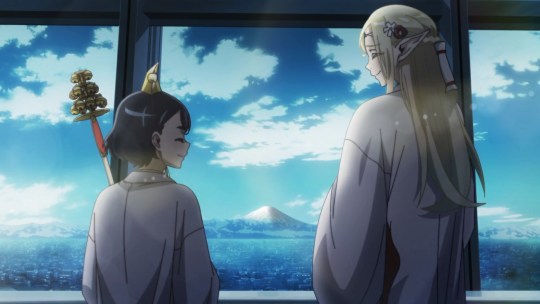
Otaku Elf, also known as Edomae Erufu, is a fantasy comedy anime. It is based on a seven-volume manga illustrated and written by Akihiko Higuchi. Directed by Takebumi Anzai, it is produced by C2C, a studio founded in April 2006. This post will have spoilers.
Reprinted from Pop Culture Maniacs and Wayback Machine. This was the thirty-fourth article I wrote for Pop Culture Maniacs. This post was originally published on June 5, 2023.
This series focuses on a sixteen-year-old named Koito Koganei (voiced by Yuka Ozaki). She becomes a shrine maiden, known as miko, at a shrine in Takamini after the death of her grandfather. As a result, she becomes the caretaker of Eldarie "Elda" Irma Fanomene (voiced by Ami Koshimizu). Elda is an immortal and beautiful elf summoned from another world. Koito encounters challenges as Elda is an otaku and hikikomori/shut-in who fears going outside the shrine following an unpleasant interaction many years prior. Even so, she attempts to get Elda to enjoy life outside the shrine.
Originally, I had not been planning to write a review of this series because I'm already reviewing nine other series this season, either about magical girls (Soaring Sky! Pretty Cure and Tokyo Mew Mew New), legendary warriors (Unicorn Warriors: Eternal), VTubers (Kizuna no Allele), a yuri-themed cafe (Yuri Is My Job!), golf girls (Birdie Wing), idols (Oshi No Ko), or other subjects (Alice Gear Aegis Expansion and Skip and Loafer). One motivation for writing this review was because of Sailor Moon, which I'm currently watching, for the first time. It features Rei Hino as a shrine maiden, when she isn't Sailor Mars.
The animation style, comedy of an immortal elf being an otaku meeting a normal person, and the centrality of food, drew me in. The latter is primarily grounded in the cooking by Koyuzu (voiced by Hitomi Sekine), the younger sister of Koito. The same can be said for Koito and Elda's stories often becoming intertwined. Also, there are characters which are portrayed as "cute", like Koito's friend Koma Sakuraba (voiced by Haruka Aikawa).
I liked that every episode of Otaku Elf has some story about past Japanese culture, especially from the Edo period. Of course, Elda does all she can to impress Koito no matter what. This is despite the fact that although she has a laptop, she doesn't know how to use a cell phone. When she does use it, she texts so much that she angers the spirits! Elda does not know everything, however, and doesn't pretend she is all-knowing. She is wise, but not omniscient.
Yordeilla "Yord" Lila Fenomenea (voiced by Rie Kugimiya) and Himawari Kohinata (voiced by Teru Ikuta) are a good addition to the series. Yord is a dark-skinned elf, who is bad at directions, and has an absurd rivalry with Elda over an equivalent of tic-tac-toe. Dr. Akane Sasaki (voiced by Yumi Uchiyama) was similarly a positive character. In fact, she is shown in the seventh episode with Kadoi, getting drunk at a bar, with both of them as an interesting pair of characters together.
There is undeniable yuri subtext in this series, specifically between Koito and Elda, especially shown in the fifth episode. Otaku Elf has a degree of intimacy it can turn to and expand in each episode. As such, the series centers on the importance of spending time with others above everything else. In that way, Otaku Elf is special.
In marked contrast to Birdie Wing, the value of studying, and education as an extension, is emphasized through Koito's intense studying in the sixth episode. The importance of taking breaks and not over-extending oneself is an interrelated theme.
youtube
I like the slice-of-life nature of Otaku Elf. This makes it different from magic-themed series such as Healer Girl and Management of a Novice Alchemist. Similarly, it is nothing like recent slice-of-life anime. The latter includes Let's Make a Mug Too, The Aquatope on White Sand, Teasing Master Takagi-san, and Laid-Back Camp.
The series differs from YuruYuri, Gabriel DropOut, Is the Order a Rabbit?, Kin-iro Mosaic, Non Non Biyori, K-On!, and Azumanga Daioh, in the same genre. Elda is a living history resource, who is good at origami, but can have awful nightmares. There's occasional casual alcoholism. But, it isn't as present as it is in Bocchi the Rock!. The latter features a sick bassist named Kikuri Hiroi, who spends most of her money on booze.
The seventh Otaku Elf episode was one of the best in the entire series. It primarily focused on Koyuzu and her desire to spend more time with her sister, Koito. Some of the funniest sequences in the episode was when she charmed people in a wholesale market so she could get fish for free.
The latter episode was only rivaled by the eighth episode. It focuses on Elda meeting another elf, named Haira (voiced by Mamiko Noto). Some of the best parts were having the historical remembrance shown in anime style resembling wood block art. The episode features another miko, named Komari, the same age as Koito. Haira is an elf with beauty only matched by Elda. She is older than Elda and Yolde, treating them as her younger sisters. The episode implied Elda is a lesbian, as she said she liked all the teahouse girls during the Edo period.
By the end of the episode, it is clear that the series is uncritical of the fact that Komari was a social influencer and that Haira was a gambler. Even though Komari was critical of Haira for gambling, she tells Koioto that if Haira is doing what she likes, it is ok. On the one hand, this makes sense as Komari had been with Haira since she was young, allowing her to take candid photographs.
On the other, Otaku Elf, by saying that Haira's desire to be a gambler is ok, implies it is a non-issue and downplays it as a problem. Most gambling is prohibited in Japan. There are exceptions for some motor sports and horse racing. The latter is something that Haira said she wanted to do during the episode.
There is an ample culture of gambling in the island nation. The island has a difficult relationship with it. There is inconsistency between reality and law. Some have pushed to completely legalize gambling across the island. Even so, some people, and groups, have objected to expanded gambling in Osaka. They have argued that crime and addiction (to gambling) will rise as a result. Those caught gambling illegally in Japan can face fines or jail time. This hasn't stopped gambling from becoming pervasive, nor the millions afflicted with gambling addiction. The series could have done a better job with this topic.
Despite the problematic approach to gambling, the series often highlights the importance of remembering the past and preserving it. In the ninth episode, Elda reads a manga that has been published for over 30 years. She reorganizes her room due to a ceiling leak (with the help of Koito) and finds an old videotape. Often series only focus on new technology. They act like anything deemed "analog" isn't worth bringing up. In some cases, there is a blend of the "old" and "new". In the case in Steven Universe, a videotape of the protagonist's mother (Rose Quartz) plays an important role in the series.
Similarly in Otaku Elf, Koito sees a videotape for the first time, and goes to her grandmother, who has an old Betamax player, excited to watch a tape of something recorded from before she was born. She learns that her mother, shown on the tape, was also a miko of Elda as well! In a typical scene, Elda embarrasses Koito. She thinks she will be picked up in a "bridal style" pose and runs away as a result. The latter is part of the ongoing yuri undertones of this series, even though Elda and Koito have more of a master-student relationship than anything that is romantic.
youtube
Otaku Elf is much more than a series with endearing character dynamics. It has a protagonist (Elda) who deeply cares about the town she lives in, a neighborhood of Tokyo, I believe. Unlike some other anime this season, such as Alice Gear Aegis Expansion, there's no fan service. Nor are there any characters which are "one-off jokes". In fact, the series, in some ways, counts as an isekai. It has a "genuineness and pleasantness" which evades many anime these days.
The show's animation studio is known for producing over 16 series, including two I'm familiar with: Hitori Bocchi no Marumaru Seikatsu (based on a manga by Katsuwo who also wrote Mitsubishi Colors) and Wandering Witch: The Journey of Elaina. None of the story elements in either of those series are present in this series.
The voice cast of Otaku Elf is just as strong as the show's opening song. Ami Koshimizu, who voices Elda, also voices the caddy of Aoi in Birdie Wing (Amane Shinjо̄), Mizuki Nakahara in Lycoris Recoil, Makoto Kino/Sailor Jupiter in Sailor Moon Crystal, Shiori in Princess Connect! Re:Dive, Yang Xiao Long in RWBY: Ice Queendom, and Konomi Yurikawa in Yurikuma Arashi. Yuka Ozaki, the voice of Koito, has lent her voice as Asuka Toyama in BanG Dream!, while Hitomi Sekine, voice of Koyuzu, voiced characters in Teasing Master Takagi-san, Konosuba, and Ms. vampire who lives in my neighborhood.
Haruka Aikawa, the voice of Koma, previously voiced a character in Shikimori's Not Just a Cutie. Mamiko Noto, voice of Haira, voiced a supporting character named Kazuki Kosuda in B Gata H Kei - Yamada’s First Time, Hakko in Canaan, Elsa in Gunslinger Girl, Kanon's mother in Love Live! Superstar!!, Shimako Toudou in Maria Watches Over Us, Gin Todo in A Place Further Than the Universe, and Saki Arima in Your Lie in April, and many other roles.
All in all, Otaku Elf is highly relatable to the hundreds of thousands of shut-ins in Japan, which the government believes is a "new social issue", and those elsewhere in the world. It might even draw in an audience from anyone who is living at "home" with their parents, or others living a "hermit-like" existence, being social recluses from society.
In any case, I recommend this series highly. I hope that it receives a second season, even though that is unlikely considering the last nine series by the same studio have not been renewed. Often, companies try and limit corporate risk by planning out each season for only 11-13 episodes. If the show is a success, "additional seasons can be ordered" as noted by Justin Sevakis.
Otaku Elf is currently streaming on HIDIVE.
© 2023 Burkely Hermann. All rights reserved.
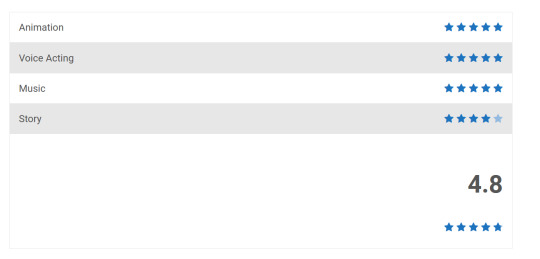
#otaku elf#pop culture#reviews#birdie wing#videotape#yuri#betamax#steven universe#bocchi the rock#gambling#vhs#hidive#alice gear aegis#voice actors#renewal#anime#Youtube
7 notes
·
View notes
Note
does slayers have any kind of new years celebrations (canon/headcanon)~?
Y'know I don't think it's mentioned in canon!
The kind of calendar they use is also pretty nonspecified- fans tend to use the Koma War as a marker the same way we use the birth of Christ, so they'll use things like "1012 AK" but there's no particular indication that's what's actually used across the barrier lands. So it's hard to tell when they would even set the new year at.
I'm gonna go ahead and suggest that most places follow a lunar calendar, or at least a lunisolar calendar, and that the New Year is celebrated during the first new moon of the year, so the exact date (according to our calendar) can vary.
Also note that the barrier lands are approximately the size of Europe, so there's a lot of room in variation of tradition! Broadly, though, I tend to imagine the New Year is considered a Pretty Big Deal and that you usually have a banquet with your extended family/community based on what kinds of food are available in your region. There's probably Heartwarming New Years Stories/Parables about families who are so poor that their banquets are just nettles and water or whatever, but the important thing is That They Love One Another.
Since the night of the new moon is probably pretty danged dark, candles and lamps and such are encouraged, as is making noise and singing.
There's probably various religious ceremonies- prayers and offerings and the like.
Lina and Gourry usually celebrate the New Year by paying respects at whatever shrine is nearby and then just chowing down on a big meal, which they do pretty much constantly but now they have a special excuse. (They do not need that special excuse.)
Seyruun's the city of holy magic so there's probably a lot of religious ceremonies involved. I bet there's a parade, and the royal family probably hosts a huge banquet. Amelia's usually involved in all that, and increasingly takes a role in organizing events and participating in ceremonies.
Zel used to celebrate the New Year with his grandfather as a kid by going to the shrine and participating in a lot of boring prayers and offerings and whatnot, and then afterwards there would be something special for dinner and Rezo would give him a blessing for the upcoming year. Then the chimera thing happened and he, uh, basically stopped celebrating the new year? He maybe would drink with Rezo's other retainers but that's about it, and then after Rezo and the other retainers died he spent a few years not really observing the new year at all if he could help it.
...til he got knighted by Phil, anyway, and now he has to celebrate the New Year at Seyruun along with Amelia, or Amelia will be sad he'll be neglecting his duties. So now he usually spends the new year tagging along with Amelia and pretending he's not enjoying himself.
3 notes
·
View notes
Note
Kari-chan, what if Junya Komatsu voiced Komasan from Yo-kai Watch.



(Komasan's human form left, and Komajiro's human form right)
Just in case you don't who Komasan is, Komasan is a friendy, peaceful, shy, yet curious komainu Yo-kai that likes discovering new things and was once a guardian at a shrine for centuries until it was demolished, leaving him wander into the city and get used to modern life. Komasan along with his family are all from the country and speak with Southern accents, which leads to him to add slang to his sentences, while he adds -zura suffix to his sentences in the Japanese version. When excited, frightened, or surprised, he usually says "Oh my swirls!" in the localizations or "Monge~!" in the Japanese version.
Here some clips of Komasan of what he sounds like, imagine it with Junya's voice over Komasan when you watch again. Also, he and Komajiro, the orange one, are both voiced by the same voice actress.
1
2
3
4
5
6
Komasan's theme
Now, let's talk about Komasan's family.
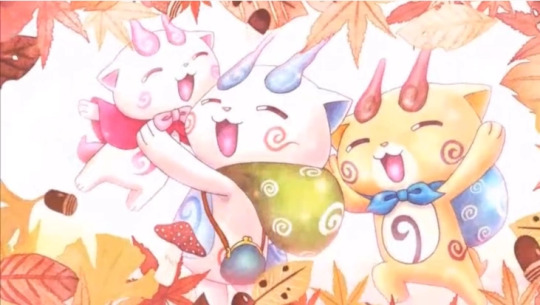
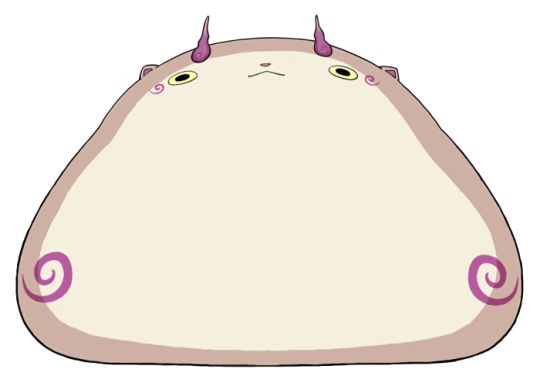
Koma Kaachan is Komasan's mother and is a blob-like komainu Yo-kai. Also, she's the ony

Komajiro is Komasan's younger brother and looks exactly like him. He's also DJ.
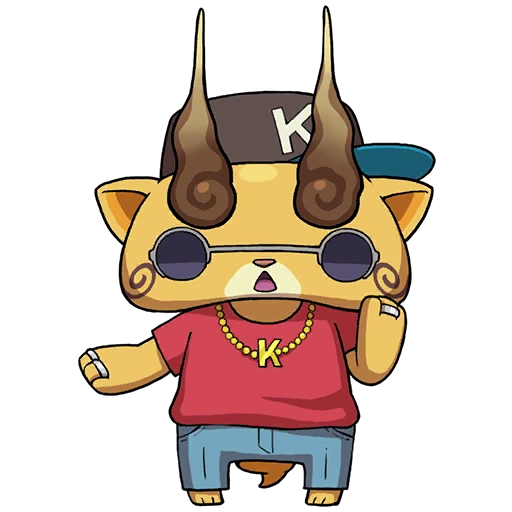

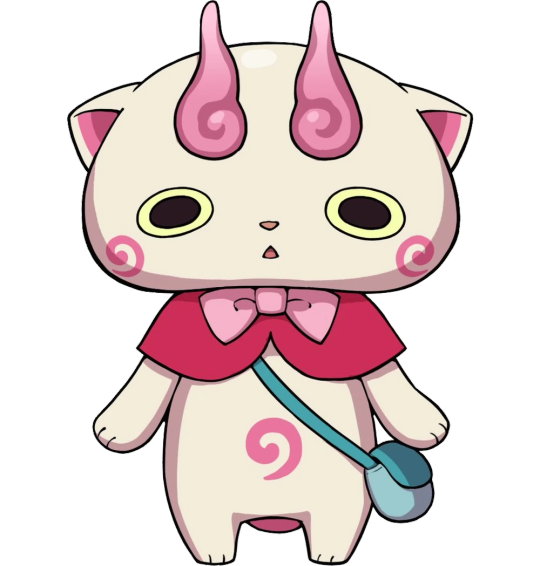
Komami is Komasan's younger sister and looks like a younger Komainu. She's also an undercover agent for a Police Organization.

Now, have you learned anything new about these characters and how much do you like them now after learning more about them, Kari-chan.

Huh. I'm not sure why but this ask has inexplicably disappeared from my inbox (I remember it being sent days ago but only showed up now)
If Junya Komatsu suddenly decides to do voice acting, I'll watch it just because he's in it, especially if it's really accessible via streaming or download. Yes, I'm that much of a simp.
Honestly, when you mentioned the southern accent, it made me think that I really want to hear Junya talk in his native dialect. He's from Miyagi in Northern Japan, so he probably speaks Tohoku-ben outside of his work, especially to his family. It's not really a common dialect to hear in Japanese media so it would be interesting how he'd mix standard Japanese and Tohoku-ben.
(No, Revice doesn't count, literally the only Tohoku-ben he spoke during the entirety of show is "gaga", even with Hiromi also supposedly being from Miyagi like Junya is.)
5 notes
·
View notes
Text
man Komaeda's name interests me so much, to the best of my ability, i've translated his name to this, so take it with a grain of salt but
Komaeda Nagito (狛枝 凪斗)
Koma - either means the Lion-Dogs you see at shrines, therefore meaning guardians OR it's referencing the Goryeo dynasty in Korea which was known for "unification"
Eda - branch; bow; bough; twig; limb; taken from "the cat hid among the branches"
Nagi - calm (at sea) or lull; taken from "after a storm comes a calm"
To - southern dipper aka The Black Tortoise/Xuanwu in Chinese or Genbu in Japanese; symbolizes good fortune and longevity in both cultures
why am i analyzing his name? honestly my hyper fixation knows no bounds
14 notes
·
View notes
Note
Munday ask: Might I hear about komainu?

"why, of course!"

"koma inu are lion or dog-like yokai, and are most commonly found guarding shrines, temples, or castles. traditionally, they come in pairs - one male, and one female. it's said that the female guards those living within the building while the male guards the building itself."

"most koma inu here are sentient, though in the living realm, you'd most likely find koma inu statues where one has it's mouth open and the other has a closed mouth. this symbolizes yin and yang, or life and death. very fitting, wouldn't you say?"
17 notes
·
View notes
Note
What are some of your favorite memories from your Japan trip? ♥️
Walking around in Osaka and just looking at and exploring the biggest and most interesting city I've ever visited in my life. Tasting Wagyuu for the first time. Seeing whalesharks in person at the worlds biggest aquarium and then buying a whole collection of plushies in the giftshop. Buying and eating all kinds of weird snacks (I will be missing mochi ice cream for the rest of my life). Singing my heart out at karaoke bars. Getting to explore a completely foreign food culture in depth. Relaxing in spas and hot springs. Falling in love with the koma-inu statues guarding the Shinto shrines to the point of bringing a pair home to my apartment. Going for walks in the beautiful countryside we visited. Visiting animal cafes. And most of all, getting to share all these amazing experiences with my friend Quinn who made the trip to Japan happen and took care of me while I was there. I'm forever grateful for him and this wonderful experience that he made possible!
13 notes
·
View notes
Text
Kyoto's Rabbit Shrine

Known as Okazaki Shrine, it's located fairly close to Heian Jingū actually. The shrine is also called Higashi Tennō Okazaki Shrine (東天王岡崎神社). The gosaijin of the shrine are the couple Susano'o no Mikoto and his wife Kushinada-hime. People go there to pray for fertility, and safety in childbirth.
The rabbits beyond symbolizing fertility are also associated with the eastern direction, hence the other name for the shrine being "Eastern Emperor" as a guardian of the east. They're also the messengers of the gosaijin. [x]




People will also get rabbit shaped clay bells, and leave them lined up all over the shrine which is kinda cool to see (they're called Usagi Dorei 土鈴). Also what's fun is instead of komainu you have koma usagi welcoming you to the shrine. [x]



And of course the goshuin

0 notes
Text


Title: Eto Irokoi Zoushi
Author: Matsuo Isami
Genre: romance, smut, supernatural, yaoi
Synopsis[baka-updates]: Masataka takes care of a shrine, which houses the 12 spirit animals of the Chinese zodiac. One day he gets a surprising visitor, a young man named Kotarou, who is possessed by the cat spirit, Koma. Their own shrine having been burned down, Kotarou now searches for a new place and ends up on Masataka's doorstep.
0 notes
Text
"Koma san Shrine"
大阪のうめ吉おおさか撮り歩記
View On WordPress
0 notes